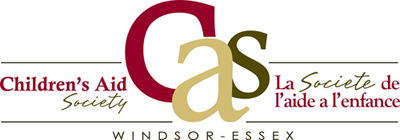If you have immediate concerns about a child, or are reporting child abuse or neglect, please call 519-252-1171. There is always someone available.
In an emergency call 9-1-1, or dial 519-258-6111
for non-emergency police assistance.
In Ontario, it is the law to report suspected child abuse or neglect.
contact your local children’s aid.
Windsor-Essex, 519-252-1171
Leamington, 519-322-0555
_____
Concerns about our service?
We are dedicated to the well-being and safety of every child by advocating for, and partnering with, our children, families and communities. If you have concerns or complaints about our service, let’s work together to resolve them. Firstly, we encourage you to make all attempts to resolve any issues with your worker immediately. We also have a formal process to review your complaints as required by the Child, Youth and Family Services Act, 2017 by using our Procedures for Service Complaints. Additional information is also available from the Ministry of Children, Community and Social Services
_____
In 1999, there were several changes to the child welfare legislation providing greater protection for children, giving more rights to case workers in investigations and expanding the responsibility of the community to report suspected cases of abuse or neglect. Section 72 of the Child, Youth and Family Services Act, 2017 (CYFSA) now indicates that every individual is required to report abuse or neglect concerns to their local children’s aid and they must do so themselves and not delegate the call to any other individual.
How to Report Abuse or Neglect
If you suspect abuse or neglect or if a child tells you he or she is being abused, report information to your local children’s aid society immediately. If a child tells you he or she has been abused, listen to the child, write down the facts after the conversation and report it to the authorities yourself immediately.
What is child abuse or neglect?
When a child is hurt intentionally, or when a parent or caregiver fails to protect a child in their care. It is against the law. It is a misuse of parental power and can lead to lifelong negative consequences. There are different kinds of child abuse: physical abuse, sexual abuse, emotional abuse and neglect. It is important to realize that the presence of any one indicator is not conclusive proof that a child has been abused. In most instances, abused children will exhibit a number of behavioural and physical indicators. If you suspect that a child is being abused, call your local children’s aid society.
The signs and indicators of abuse and neglect may include, but are not limited to, those that are listed below:
What is physical abuse?
Physical Abuse is when a child is injured or harmed by his or her caregiver, or when the caregiver fails to do something to protect the child. Injuries include bruises, cuts, burns, and fractures. Children who are physically abused often can’t remember how injuries happened, or offer inconsistent stories when questioned. They may cringe or flinch if touched unexpectedly. There may be a presence of several injuries that are in various stages of healing. Physically abused children might be wary of adults and extremely aggressive or extremely withdrawn.
What is Sexual Abuse?
Sexual abuse is any sexual exploitation of a child by an older person where the child is being used for a sexual purpose.
Sexual Abuse includes sexual touching, procuring sexual activity from a child, exposing genitals to a child and incest. Physical signs that a child has been sexually abused include excessive itching in the genital or anal areas, torn, stained or bloody underwear and injuries to the genital area. Behavioural signs include age-inappropriate play with toys, self or others displaying sexual acts, age-inappropriate sexually explicit drawings, displaying sexual acts or unusual sexual knowledge.
According to the Child, Youth and Family Services Act, the law that gives children’s aid societies their legal authority, sexual abuse is any sexual exploitation of a child by someone having charge of the child- parent, caregiver; sexual abuse is also sexual exploitation by another person where the person with responsibility (parent or caregiver) should be aware of the possibility of abuse and fails to protect the child.
What is Emotional Abuse?
Emotional Abuse happens when a caregiver continually treats a child in a negative way that damages self-esteem. This type of behaviour might include constant yelling, demeaning remarks, rejecting, ignoring or isolating the child. Emotional abuse can be difficult to identify, but some behavioural indicators include inhibition in play, severe depression and extreme attention-seeking, withdrawal or aggressiveness. Children may complain of headaches, nausea or abdominal pain. As well, bed wetting that is non-medical in origin may be a physical sign of emotional abuse.
What is Neglect?
Most parents and caregivers do not intend to neglect their children. Instead, neglect is usually the result of ignorance about parenting or an inability to plan ahead. Neglect occurs when a caregiver fails to provide basic needs such as adequate food, sleep, safety, supervision, clothing or medical treatment. Children suffering from neglect are often pale, listless and unkempt. They frequently miss school, forget a lunch and may show up dressed inappropriately or in dirty clothing. Physical signs of neglect are poor hygiene, unattended physical problems or medical needs (i.e. dental work and glasses) and a consistent lack of supervision.
